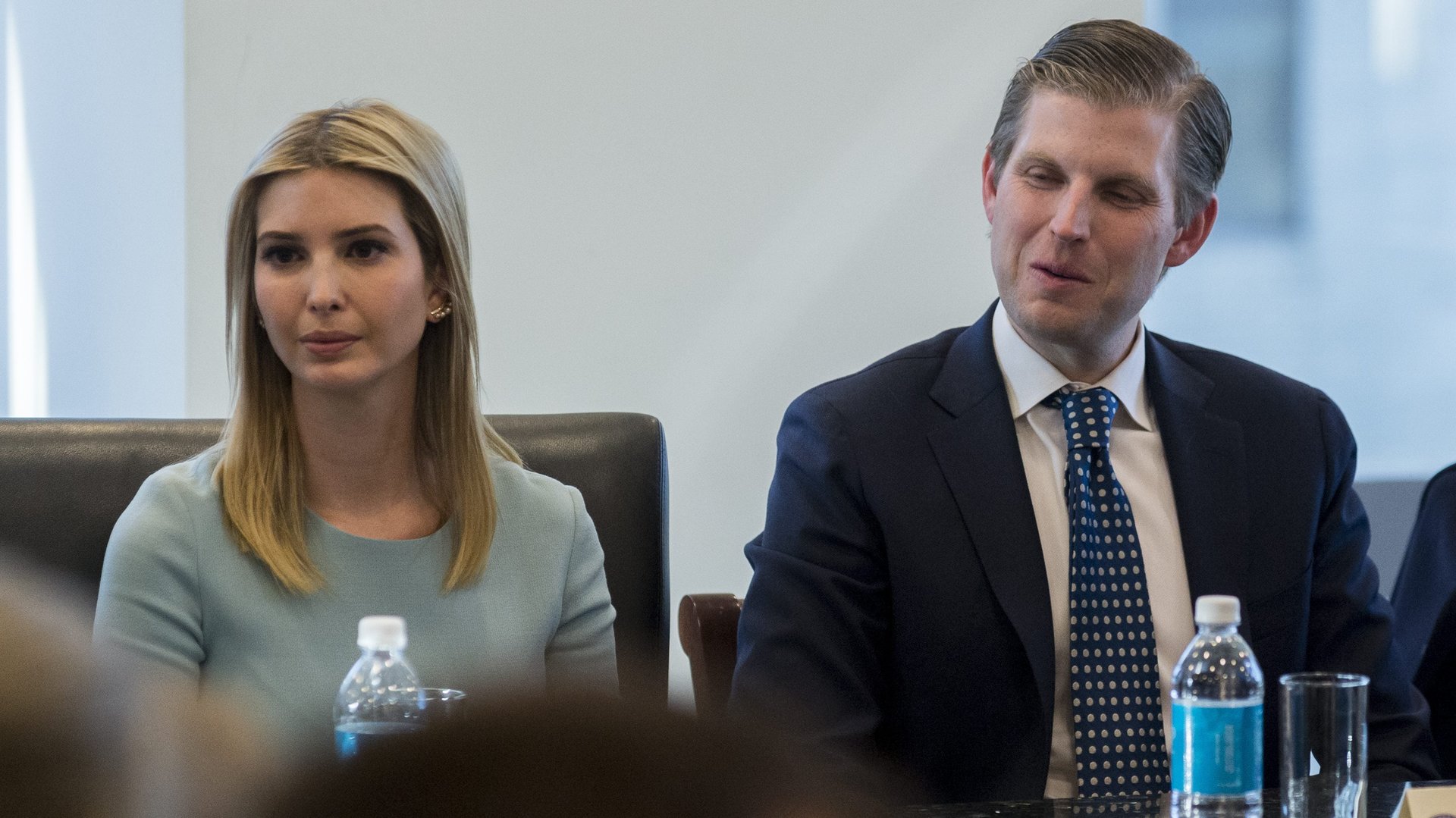The most disturbing thing about Trump’s tech summit had nothing to do with Silicon Valley
At yesterday’s big tech summit in Trump Tower there were four notable attendees who have nothing to do with Silicon Valley and no job in government. Guess what they all had in common?


At yesterday’s big tech summit in Trump Tower there were four notable attendees who have nothing to do with Silicon Valley and no job in government. Guess what they all had in common?
No idea? Not even a stab in the dark? Maybe this will help:
Let’s start with the three people at the far end of the table, facing the camera in the photo above. Those are three of Donald Trump’s children, Donald Jr., Ivanka, and Eric. The fourth doesn’t share the Trump surname, but he’s married to Ivanka Trump. We’re talking about the young real estate impresario Jared Kushner. He was seated at one of the long ends of the table, opposite the US president-elect and his primary ally in Silicon Valley, Paypal co-founder Peter Thiel.
What’s so surprising about any of this? Well, nothing, sadly. Despite being legally barred from holding jobs in the administration, Trump’s three adult children have been near-ubiquitous in his transition meetings. Ivanka, for example, already has sat in on a chat with Japanese prime minister Shinzo Abe and chatted by telephone with Argentinian president Mauricio Macri.
So, no, this isn’t in anyway unusual, but it should still shock you. You may remember that today (Dec. 15) was when the incoming US president was supposed to hold a press conference to tell the world how he plans to free himself from conflicts of interest and exit his “great business in total.”
Instead, three days before the big reveal, he postponed the announcement. The only detail Trump has offered since is that the empire would now be managed by his adult sons while he retains an ownership stake. As anyone who cares about the subject has been repeating ad nauseam since the election, that’s not good enough satisfy even the most basic ethical standards of the office.
Yesterday’s tech summit was a rare gathering of top-level executives from some of the most vaunted names in American business. There was much to dissect: who sat where, who was missing, and whether Silicon Valley’s leaders should have attended at all. It’s all so fraught. But the biggest potential conflict of all was the one at the far end of the table, where the view of some of America’s most influential business leaders was especially favorable.